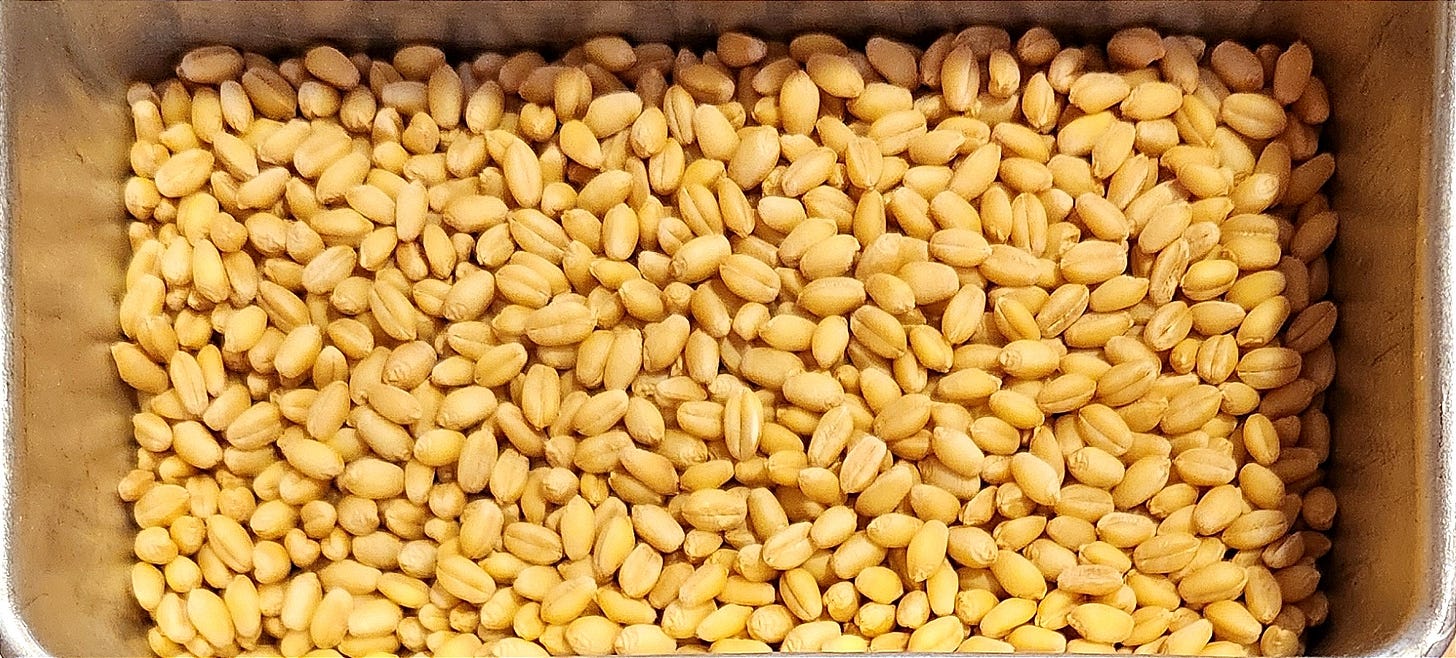Many wheat varietals have long and interesting histories, but Sonora Wheat surely takes the crown. As the first wheat crop cultivated in the Americas, it symbolizes the beginning of wheat culture and cuisine in what is now the United States and Mexico. When we eat Sonora Wheat today, we’re taking part in that long and complex history.
The First Wheat
It is believed that Sonora Wheat was brought to the Americas by a Jesuit missionary from Spain named Padre Eusebio Kino. [1] Kino founded a mission in what is now the state of Sonora, Mexico, in 1687. He traveled extensively through the Sonora Desert between his home base in Mexico and what is now Arizona, and he introduced many new foods and farming techniques to the Pima people. It is believed Sonora Wheat was among those foods, and members of the Pima community still grow it today. [2] As Ramona Button of Ramona Farms says, “We were the first farmers in the Western Hemisphere to grow wheat, and we are still growing it!” [1]
Other sources say it was perhaps a different missionary who first introduced Sonora Wheat to the Indigenous Peoples, and we may never know the complete and exact history. Personally, I think it’s very possible that multiple missionaries introduced it in several places. That’s because what we do know for sure is what the original purpose of wheat cultivation was: to make Communion bread. To the missionaries, being able to serve Communion was clearly important enough to justify all the effort of bringing wheat over from another continent and cultivating it in the desert. [3]
In the Americas, a love for wheat quickly developed, and bakers started making many different types of bread for many different purposes. Over a period of more than 300 years, bread culture in the Americas only grew. Now, Mexico is home to the beloved pan dulce, of which there are hundreds and possibly thousands of varieties. The most iconic of these, of course, is the Concha. Interestingly, in the northern Mexican states such as Sonora, tortillas are now often made with flour rather than corn. This change paved the way for favorite foods like burritos and chimichangas to win hearts everywhere. Farther north still, Sonora Wheat continued to feed Americans throughout the 19th Century when exports to the east fed soldiers during the Civil War. Did you know Arizona and parts of California were the first regions to be considered “America’s breadbasket”? Of course, it was the Pima people who grew all that grain. [3]
Almost Forgotten
Over the years, Sonora Wheat became less popular in the United States, and wheat agriculture in the Sonora Desert region struggled. Increased mechanization of agriculture meant many farmers lost their jobs, and when the Gila River was dammed to irrigate cotton fields, the Indigenous farming communities struggled to grow their own crops with the limited water supply. When water was available, it was only through irrigation systems that overpowered many crops which had been cultivated to thrive in an arid climate using only water from seasonal river runoffs. Sonora Wheat was one of these endangered crops, and by 1975, it was so threatened that it could not be sold commercially. [4]
Red wheats became more popular than white wheats, and the entire American baking complex that emerged in the mid 20th Century was based on homogenous monocrops coming out of the Northern Plains. Not only did this mass-production of commercialized bread threaten local farmers, millers, and bakers across the country, it also jeopardized the futures of many types of grain, including Sonora Wheat. Despite having a special flavor and unique ability to thrive in desert climates, Sonora Wheat was suddenly viewed as unimportant and irrelevant since it didn’t fit in with the specific demands of the mass-production bread industry.
Sonora Wheat Today
In the past few years, projects and grants, such as the USDA Western Sustainable Agriculture Research and Education grant in 2012, have allowed farmers in Arizona and similar areas to start growing Sonora Wheat again. [5] It’s a winter wheat, meaning farmers plant it in the fall and harvest it the following summer. The longer growing season results in a lower protein flour that performs well in pastry applications. Sonora Wheat is resistant to drought, cold, disease, and fungus, and it’s a fantastic cover crop that adds nitrogen back into the soil. [3] For all these reasons, and for its unique history as the first wheat grown in the Americas, farmers are excited to grow it again. Of course, there are many farmers, especially members of the Pima community like Ramona Button, who never stopped.
This week’s recipe is for Champurrado Corn Cake, a cake we developed to symbolize the crossover of Sonora Wheat and the traditional corn-based cuisine of the Indigenous Peoples of Mexico. Champurrado is a traditional corn-based drink flavored with cinnamon and cocoa, and we bring all those flavors to our cake. In our bakery, we make this cake with Sonora Wheat from Ramona Farms, and we love the sweet, almost corn-like flavor and delicate crumb it contributes. But, you can use any soft white winter wheat you have available. Let’s get baking!
Sources
1 https://store.ramonafarms.com/S-MOIK-PILKAN-Wheat-Berries-White-Sonora/productinfo/WHTBWS1/





